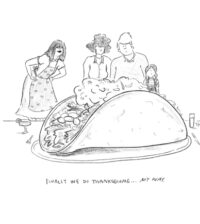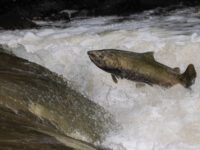Jody Purdom
Special to the Sun
The Sonoma Ecology Cen-ter (SEC), a local non-profi t environmental organization, learned late Friday, Dec. 19, that all work funded by state bonds had been ordered to cease immediately. The edict came down from California’s Department of Finance and is dev-astating news to the SEC, which has several such grants funding more than half the work done by its staff of 27, many of whom live in Sonoma Valley.SEC Executive Director Rich-ard Dale said the news couldn’t have come at a worse time. “We have strived over the years to do critical work in the community to preserve and enhance our amazing envi-ronment—science education in the schools, work with water, land, energy, wildlife, and food—all to help our val-ley meet critical future challenges, and we’ve done this with very little burden on our community’s re-sources. We found grants linked to state bonds that were available and they’ve been stable sources of funding because they aren’t tied to the state’s Gen-eral Fund. They’ve enabled us to do cutting edge work and allowed some impressive scientists and experts who live here to work with us.”The mission of the SEC is to work with the community to en-hance and sustain ecological health in Sonoma Valley. Founded in 1990, the SEC has brought in 15 million dollars in grant funding to carry out various projects, most of which directly contribute to the Sonoma Valley. Approximately 75 percent of the SEC’s funding comes from competitive state and federal grants, leveraging commu-nity donations to bring in millions of dollars to the local economy. The organization operates three facilities including the Sonoma Valley Watershed Station consist-ing of 5,000 square feet of labora-tory and offi ce space in a former UCSF research lab in Eldridge; an offi ce for the public on the Sonoma Plaza in the Sonoma State Historic Park; and the Sonoma Garden Park, a six-acre garden and edu-cational campus on Seventh Street East in Sonoma.“The news we received last week is pretty dreadful. It means that many of our staff with families to support are being laid off right be-fore the holidays, for an unknown length of time. Some agencies are saying that they can’t pay invoices for work we’ve done under con-tract and already paid our staff for. That means there won’t be enough cash to cover holiday or vacation pay for staff and their families while we wait this out. I don’t know how to express how frustrating and hard this is for us.”State budget negotiations reached a crisis last week when the Governor called a special leg-islative session to address a loom-ing budget defi cit speculated to be nearly 40 billion dollars over the next two years. Democratic lawmakers responded with an 18 billion dollar budget adjustment package that cut state services and raised fees and taxes, and the Gov-ernor refused to sign it, claiming it wouldn’t fundamentally change the situation. Another special ses-sion has been called to continue deliberations through the holidays until an agreement is reached.For almost 20 years, the SEC has been a vital part of the Sonoma Valley. Growing from a grassroots organization to a staff of 27 today, the SEC now needs the communi-ty’s help. According to Dale, Sono-ma Valley is graced with an un-usual biodiversity in a small area — roughly 20 percent of Califor-nia’s biodiversity in 1/10th of one percent of California’s land area. Yet the valley is 85 percent pri-vately owned. Therefore, mean-ingful change has to come through informed, voluntary, self-motivat-ed action. Residents and visitors are invested in the beauty and rural character of Sonoma Valley. The SEC’s work is necessary to ad-dress challenges related to water, open space, rural character, bio-diversity, energy, and quality of life and the organization has found negotiation and collaboration to be the most effective approach to mak-ing progress. The SEC’s programs involve research, to understand the condition of the watershed, education, to share what we know with adults and children, restoration, to repair damage, preservation, to protect our natural heritage, and geographic in-formation services, using tech-nology to manage and share envi-ronmental information.Asked what local residents can do, Dale said there are two things that would really help. “The fi rst is to write or call legislators to let them know how unfair it is to put families and non-profi t organiza-tions across the state at risk, espe-cially during the holidays, particu-larly when there is no link between this work and the state’s defi cit. The other thing people could do, and I know this is challenging right now, is to help with a dona-tion. It could help us get through. If someone is considering making a donation to us this year, it would have a very profound impact right now.”For more information about how to help or to donate, contact the Ecology Center at 996-9744 or at www.sonomaecologycenter.org. Legislators can be contacted at www.leginfo.ca.gov/yourleg.html.






